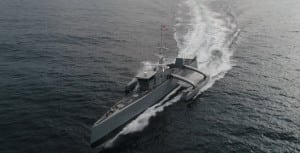
The Navy is looking at a three-step approach in procuring unmanned vessels in its 30-year long-range shipbuilding plan, service officials said Wednesday. The Navy’s top civilian acquisition official told reporters during a phone roundtable on April 20 that over near-term the service is aiming to mature unmanned surface and undersea technologies, experiment with them, learn how to operate them as unmanned operations, then move on to operating as manned-unmanned teams. This experimentation is relegated to the next five to 10…

 By
By 











